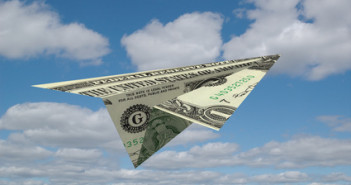The US managed to continue growing throughout 2011 while the rest of the world slowed down. The 2008 financial crisis gave birth to the “decoupling” theory where China continued growing rapidly while the West was sinking.
Indeed, while China and other Asian countries were slowing down during the end of 2011, and while Europe most likely entered a recession, the pace of growth picked up towards the end of 2011. Q3 saw an annualized growth rate of 1.8% and estimations for Q4 stand on 3%.
This analysis originally appears in the Forex Outlook for Q1 2012. You can download the full report for free by joining the mailing list in the form below.
What are the reasons for this growth?
- Successful Sales Season: Since Thanksgiving, American consumers are busy buying. This is especially seen in purchases through the internet and through mobile phones. While this was often pushed by significant discounts, consumption is around 70% of GDP.
- Tax Incentives: At the same time that manufacturing purchasing indices (PMIs) dropped into contraction levels in Europe and flirted with these levels in China, the US saw continued growth. One of the drivers is tax incentives offered to manufacturers.
- Stability in home prices: There are arguments about whether the US housing market has already reached a bottom. There is gap between multi-family homes and single family homes or between apartment buildings and villas if you wish. Multifamily homes are probably doing better and are perhaps off the bottom in terms of prices while single family homes are left behind and dragging prices lower.
- Private Sector Employment: Recent months have shown a steady trend of job gains in the private sector. At first, the pace was enough to counter the government layoffs and to keep the unemployment rate from rising. It now seems that this gain in jobs is gaining traction and managing to push the unemployment rate down.
All these have contributed to growth in the economy. The first quarter of 2012 will see publications of data from the Q4 2011, especially with the three publications of GDP. The question is: Will this continue?
More Growth in Q1
Some of the positive factors will continue and some will diminish:
- Sale Season Over, But Wait: While the traditional sales season is over, there is still hope due to one factor in recent economic activity: inventories. Inventories are also part of GDP and they have been dwindling down. Replenishing of inventories in Q1 could replace strong consumption and provide more economic activity.
- No more tax incentives: Apart from incentives that have expired, the payroll tax cut has only been extended till the middle of the quarter. With the political deadlock in Washington, any measures that need to be taken will probably not be taken, and this will weigh on the economy.
- Home prices trend to continue: US banks will likely suffer from the European troubles, but with the deleveraging process well underway, this isn’t likely to stop the recovery, or at least the bottoming out of the US housing sector. Some regions will do better than others, but the encouraging trend will likely continue.
- Employment Trend Likely to Change: The political deadlock in Washington will likely weigh on the economy in two ways – more government layoffs that will drag Non-Farm Payrolls lower and no new tax incentives.
- External Headwinds: The “reverse decoupling” cannot last too long. With a European recession likely confirmed soon and the escalating debt crisis, the US locomotive will have an uphill struggle. In addition, higher oil prices for a longer period of time also add to the struggle. Both topics are detailed later on.
There is one highly regarded research center that is predicting a full blown US recession. Lakshman Achuthan of ECRI repeated this call, based on “contagion in forward looking indicators”. Puzzled by this term? You’re not alone.
Things look positive now, but the political deadlock and global trouble weigh on the US. So what will the bottom line be?
A slowdown in US growth in Q1 2012 compared to Q4 2011, but no economic contraction. Not yet. The US has enough strength to continue growing during this quarter.
In the current environment, strong US growth is bad for the dollar, while US weakness triggers risk aversion which helps the dollar. The middle path of slower growth will likely strengthen the dollar modestly and leave the scene to other themes.
